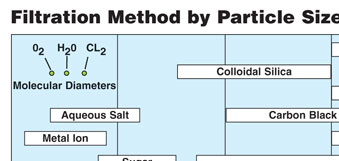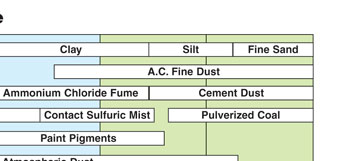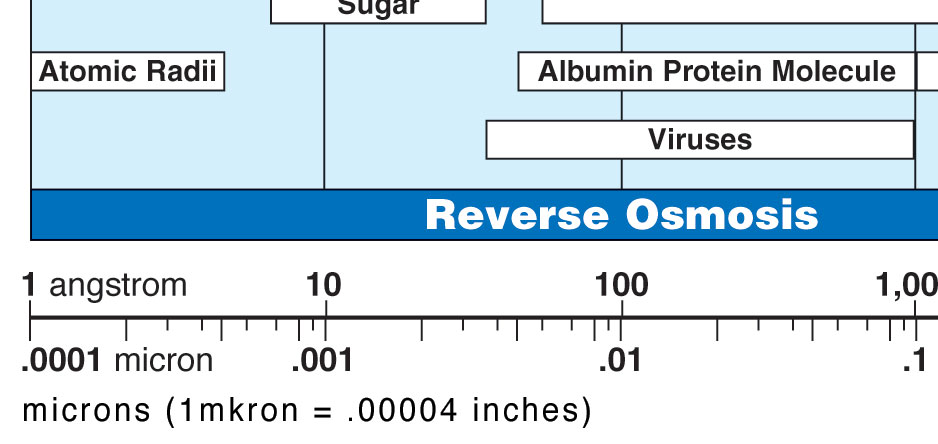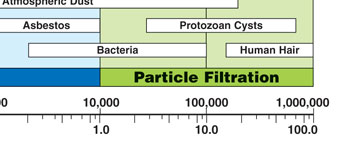|
Typical
Reverse Osmosis Contaminant Removal Rates
|
Aluminum
|
|
86% |
|
Arsenic
|
96% |
|
Barium
|
96% |
|
Bicarbonate
|
90% |
|
Borate
|
30% |
|
Bromide
|
87% |
|
Cadmium
|
|
96% |
|
Calcium
|
|
94% |
|
Chloride
|
|
87% |
|
Chromate
|
|
86% |
|
Chromium
|
|
96% |
|
Copper
|
|
98% |
|
Cyanide
|
|
86% |
|
Detergent
|
|
97% |
|
Ferrocyanide
|
|
98% |
|
Fluoride
|
|
87% |
|
Herbicides
|
|
97% |
|
Insecticides
|
|
97% |
|
Lead
|
|
97% |
|
Magnesium
|
|
96% |
|
Manganese
|
|
95% |
|
Mercury
|
|
96% |
|
Nickel
|
|
98% |
|
Nitrate
|
|
80% |
|
PCBs
|
|
97% |
|
Perchlorate
|
|
96% |
|
Phosphate
|
|
96% |
|
Potassium
|
|
87% |
|
Radium
|
|
80% |
|
Selenium
|
|
94% |
|
Silicate
|
|
85% |
|
Silver
|
|
93% |
|
Sodium
|
|
87% |
|
Spores
|
|
99.9% |
|
Strontium
|
|
96% |
|
Sulfate
|
|
97% |
|
Thiosulfate
|
|
96% |
|
Zinc
|
|
98% |
Factory
Tests at 65psi and 77F.
Actual
rates may vary.
|
|
|
About
Reverse Osmosis Filtration
Reverse
Osmosis filtration cleans water by taking out the totally
dissolved solids (TDS) which contaminate the water.
Although city water treatment removes the dirt and debris
and adds chlorine to prevent the spread of diseases,
it does not remove the dissolved solids from the water.
Also with the increasing pollution of our surface and
ground water, it is more important than ever to have
a way to remove these contaminants at the point of use
in your home.
Reverse Osmosis membranes used in water filtration systems
can on average, remove 95% of dissolved contaminants
from water (see table at left). Only 1% of the city
water entering the home is used for drinking and cooking
— about 2-3 gallons per day— where the average
home uses 300 gallons per day or more. So it makes sense
to clean just the water needed for drinking and cooking
at home. City water is available at the home from already-installed
water mains and has the required pressure of 60 to 75
psi to make the reverse osmosis system work.
Osmosis is a naturally occurring process in human and
animal membranes. Salts in the body fluids build up
osmotic pressure, forcing water molecules through the
living membranes in our bodies. In under-sink reverse
osmosis systems, pressure from the city water overcomes
the “salt” pressure of the dissolved materials
and forces the water molecules through a synthetic thin
film membrane, leaving the dissolved salts behind. The
city water enters the membrane filter element, and two
streams leave; the clean water and the water containing
the dissolved solid residue, called brine, which is
discarded to the drain. On the comparative chart below,
reverse osmosis removes the smallest of material molecules,
from 1-micron down to 1- Angstrom. For particles larger
than 1-micron, particle filters are used ahead of the
RO membrane to prevent plugging of the tiny membrane
pores in the reverse osmosis membrane.
|
|




